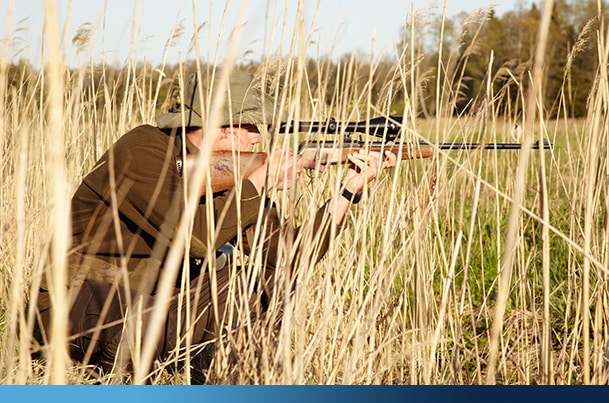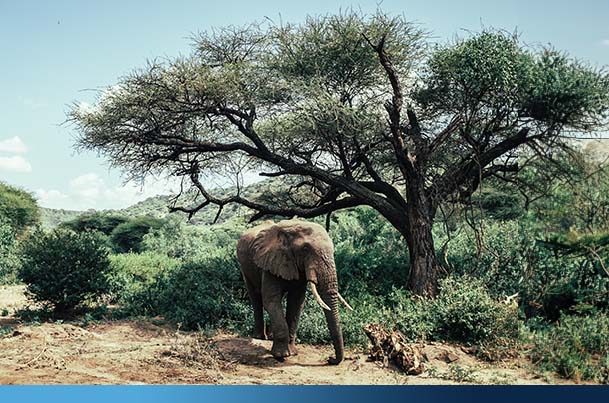Wide area surveillance for anti-poaching
Fight against illegal hunting or capturing of wild animals and fight against illegal harvesting of wild plant species, called anti-poaching, is becoming more and more necessary around the planet due to the increase of malveillance acts during the last decades. SPYNEL panoramic thermal imaging cameras are cost effective equipment to ensure all weather, day/night long range surveillance and ensure detection and tracking of intruders, poachers or traffickers outside or inside the fences (or virtual fences) surrounding large natural areas.
Wildlife Monitoring: Main Challenges


Remote and Inaccessible Terrain
Wildlife monitoring often entails the surveillance of remote and inaccessible terrains, with dense foliage, , posing a significant challenge for field researchers. The rugged landscapes, dense vegetation, and lack of infrastructure in many habitats make it arduous to establish and maintain monitoring stations, necessitating innovative solutions to overcome geographical barriers.
Data Overload and Processing Complexity
Modern wildlife monitoring systems generate vast amounts of data, ranging from images and videos to telemetry and sensor readings. Managing and processing this influx of information presents a formidable challenge, requiring sophisticated algorithms and data analytics tools to extract meaningful insights while minimizing false positives and ensuring data accuracy.
Sensor Reliability and Environmental Conditions
Deploying sensors in the wild introduces concerns related to their reliability and resilience against harsh environmental conditions. Factors such as extreme temperatures, humidity, and inclement weather can impact the performance of monitoring equipment, necessitating the development of robust, weather-resistant technologies to ensure continuous and accurate data collection.
Wildlife Monitoring: Main Threats


Poaching
This illegal practice leads to a drastic reduction in wildlife populations, particularly endangered species such as elephants, rhinos and tigers. Infrared surveillance can detect suspicious activity even in total darkness, preventing poachers from doing any harm.
Species trafficking
Wildlife trafficking is the third most profitable illegal trade in the world. Entire species can be threatened with extinction, and ecosystems can be destabilised. Thermal surveillance technology can monitor key transit points, helping to intercept and prevent trafficking.
Human intrusion
Activities such as illegal land clearing, mining and unauthorised construction can lead to habitat destruction.
Wildlife Monitoring Solution
With Spynel Panoramic Infrared Cameras


HGH Infrared Systems has developed an innovative panoramic solution detecting and categorizing long-range threats. The SPYNEL infrared camera range protects any kind of critical infrastructures or military assets thanks to a 360° camera. Fully passive, the SPYNEL camera ensures real-time panoramic video and automatic detection, classification & tracking.
How to secure Parks against poaching?

Why choosing Spynel for Wildlife Monitoring?
360-Degree Panoramic Coverage
The Spynel infrared panoramic camera offers unparalleled situational awareness with its 360-degree field of view. This expansive coverage eliminates blind spots, providing a comprehensive surveillance solution for wildlife monitoring across vast and challenging terrains.
Effective Observation in Low-Light Conditions
Leveraging advanced infrared technology, the Spynel camera excels in capturing high-resolution images even in low-light or nocturnal conditions. This capability is essential for wildlife surveillance, allowing researchers to observe and study animal behavior during crucial nighttime periods.
Adaptability to Harsh Environmental Conditions
Built to withstand challenging environmental conditions, the Spynel camera is resilient against factors such as extreme temperatures, humidity, and inclement weather. This robust construction ensures continuous and reliable operation in the unpredictable and often harsh habitats where wildlife monitoring is essential.
Reduced False Alarms with Advanced Analytics
The integration of advanced analytics minimizes false alarms by distinguishing between routine wildlife activities and potential threats. This reduces the workload on monitoring personnel and enhances the efficiency of the surveillance system, ensuring that alerts are triggered only when significant anomalies are detected.
Seamless Integration with Wildlife Monitoring Systems
The Spynel camera seamlessly integrates with existing wildlife monitoring systems, enhancing the overall efficiency of surveillance infrastructure. This interoperability allows researchers to incorporate the camera into their broader monitoring strategies, creating a cohesive and interconnected approach to wildlife surveillance.
Remote Monitoring Capabilities
The camera's remote monitoring features facilitate real-time observation from a centralized location, reducing the need for physical presence in challenging terrains. This capability not only enhances the safety of monitoring personnel but also enables continuous, unobtrusive surveillance of wildlife habitats.









